The claims clinic meets for the last time this year to tackle fraud and agrees that the data needed to fight the problem is out there – we just need to learn how to use it
Insurance Times’ final claims clinic of the year tackled one the biggest problems confronting the insurance industry. In a lively debate held in Vinopolis in London, the panellists addressed the issues surrounding fraud, a crime that according to the ABI is estimated to cost the insurance industry £1.9bn every year.
Inadequate use of data and technology by insurers swiftly emerged as a major concern.
SAS head of insurance Bart Patrick said: “The technology is there. It is available and it is not actually that new anymore.” He argued that insurers needed to make better use of the data available, adding that the industry was in the “twilight zone” when it came to implementing detection methods.
“The common argument is we don’t have the data or the data is of such poor quality it can’t to be used,” Patrick said. But he pointed out that when the available data was used with the right technology, up to 80% of such data could be used to weed out fraud.
AIG vice-president of financial crime Glen Marr said the industry had moved on a great deal in its efforts to tackle fraud, but he echoed Patrick’s belief that more needed to be done. “We sit on data, as individual insurers and collectively as a mass, and we haven’t yet addressed the whole issue of sharing data for fraud prevention purposes. We haven’t yet joined the wires on this data-sharing issue.”
Marr pointed out that while certain sectors of the market had begun sharing data, other sectors such as travel had yet to make that leap.
“I think it is a pretty big step for the market,” he said, “and if we are going to make a big step forward, that is where we are going to get a fairly substantive win.”
RBS Insurance’s director of operation risk and crime, Allan Clare, argued that while the industry had a collective responsibility to help identify fraud, insurance companies must not lose sight of their own individual responsibility in collecting data.
GAB Robins head of counter fraud Neal Daniel added that reluctance to share data would encourage more fraud. “If you give fraudsters a weapon, they will hit you over the head with it in the blink of an eye, and one weapon that we have given them is the time it takes us to get the information to deal with them.”
Clare added that making good use of the current available data was vital, as the amount was likely to reduce in the future. “The quality of the data is as good as it is going to get, quite frankly. In a market where there are so many distribution channels making the process quicker and more accessible for the customer, I envisage insurers getting less in the way of data. Therefore, the task is to make the amount we are collecting better.”
Marr said insurers needed to be able to flow data into a single industry source. “One logical route to improving data sharing for fraud prevention purposes, is to channel a wider set of customer and third-party data into one industry hub, where using a variety of data-screening tools, the high- and low-fraud risk claims are segmented, and insurers are then left to make their own risk-based decisions.”
Patrick pointed out that aggregator sites may be an untapped source of valuable data that could help pinpoint fraudulent activity. “Aggregators have an enormous amount of data and over time, as there are developments in the industry, it opens up new opportunities for fraudsters to come and test things. Aggregators are in a unique position in that you can see how somebody is operating across a range of quotes and possible policies.”
All agreed that anti-fraud messages to the public needed to become stronger. Marr said the industry needed to tackle public perception about insurance fraud. “I’m not convinced there is a feeling out there that you will get caught if you try to defraud an insurer. I don’t believe that perception is out there. I think people believe they can get away with it,” he said.
Curbing crime
The panel then turned its attention to the thorny question of how to deter would-be fraudsters. Clare favoured the withdrawal of insurance products to those who had a history of committing insurance fraud. “ABI studies say the most recognisable impact for those who might be considering insurance fraud is denial of services. It denies the person access to products – the criminal sanctions are that you can’t buy a house, you can’t insure a car.”
But Daniel argued that prosecution would prove to be the strongest deterrent. “The biggest deterrent is to actually prosecute somebody to let them know you are applying some vigour … prosecuting somebody and getting it into the paper would make a massive difference.”
Marr said: “We need stronger and more visible deterrents in order to communicate to the public that committing fraud is unacceptable behaviour. The police generally will and do act on reported insurance fraud, but it needs insurers to devote time and effort to properly prepare cases for referral to the police.”
He believed that while the creation of the Insurance Fraud Bureau (IFB) has made great inroads in tackling organised fraud, more steps needed to be taken in the battle against opportunistic fraud. He argued this could prevent the development of organised fraud.
“My guess at what happens is that someone has been an opportunistic fraudster and the opportunities have been pretty simple, and then they step up in a different league. The message should be: ‘we’ll pay your claim quickly if it is valid but if you step over the line to the fraudulent side, even if it is a low-value claim, we will strike back’.”
The panel’s chairman, Insurance Times editor Tom Broughton, asked whether a ‘name and shame’ television campaign could help in the fight against fraud. Clare said that while previous PR campaigns had failed, he believed the time was ripe for a fresh approach.
“I think if there was ever a time [to do something] it is now, if you look at the success we have generated with the IFB and the publicity that the body has generated.”
But he added that he felt frustrated by the time it took to implement new strategies, pointing out that the National Fraud Association had planned to develop a media campaign by the end of the year. “Well, it is not very long before Christmas; it is the end of the year and where is that media campaign?”
Marr added that such an initiative could be effective, pointing to the success of the drink-driving campaigns. “There must be some mechanisms for a deterrent that gets under people’s skin. It worked with drink-driving. It took a long time but it happened. It became socially unacceptable.”
Rally the troops
The panellists all agreed that it was vital to ensure that staff were well-educated when it came to spotting fraud. But Patrick said he was concerned that the quality of frontline claims handlers had fallen.
“The experience and quality of claims adjusters is being suppressed. It has very much turned into a process … You are dumbing down the whole process of claims into this sausage machine and we are losing that valuable ability to create the case, to bring it to prosecution and take it to the police.”
Marr agreed that good claims handling was a vital weapon in battling fraud. “There is a danger of the industry overcomplicating fraud prevention, when in respect of claims fraud, success is actually frequently attributable to good claims handling, by experienced, competent and well-trained claims professionals,” he said.
Meanwhile, Daniel argued that insurers need to take a holistic approach and ensure that all team members, including technicians, suppliers and secretaries as well as loss adjusters, had the appropriate skill set to identify signs of fraud.
The subject then turned to whether the law was offering enough support to insurers battling fraud. Marr said his experience had been positive and that police responded well to fraud cases that had been properly packaged by insurers. “Police generally are receptive. Could they do more? I’m sure they could, but then again so could the sector,” he said.
The panellists concluded the session by looking to the future. Clare stressed that the arrival of Solvency II would put increased pressure on insurers to reduce their exposure to risk and better manage financial crime.
He said he hoped the FSA would become more prescriptive, to encourage insurers to step up efforts in fighting fraud. “If we have to start declaring how we deal with financial crime, that is going to be a particular driver for insurers,” he explained.
Patrick said insurers needed to learn from the example set by the banks in tackling fraud. “They have got their data together and have modelled it, and they have the trained people ... and I think that is where we will end up and is what I see happening in the future.”
All agreed that greater collaboration was a must for the industry. Marr said: “The future has to feature significantly improved data sharing and to include non-industry partners, as we shouldn’t collectively allow the situation to continue whereby fraudsters have an opportunity to move between insurers, exploiting gaps in data sharing.” IT






























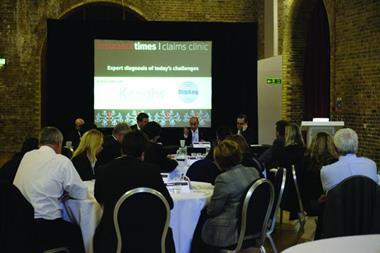
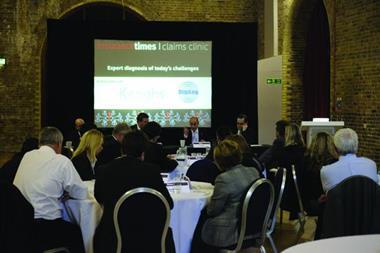
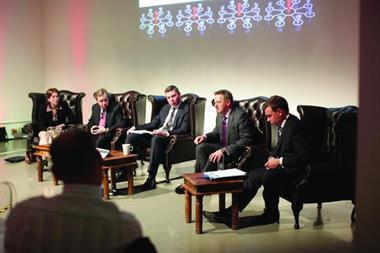
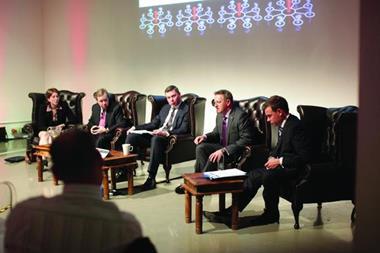
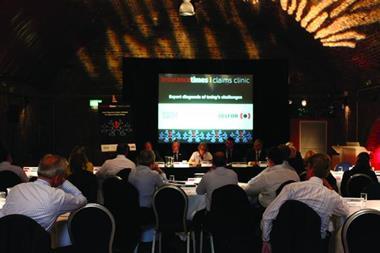



No comments yet